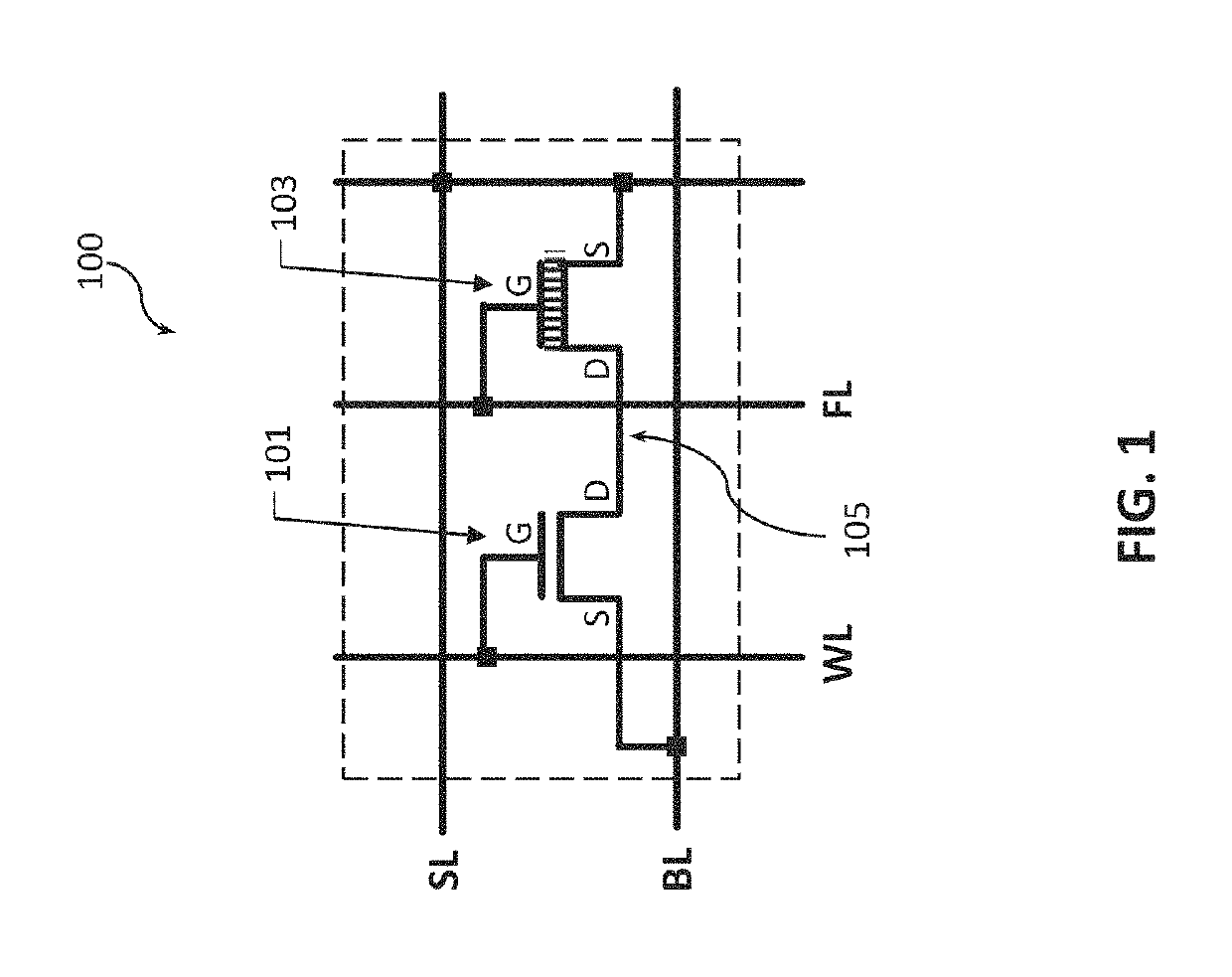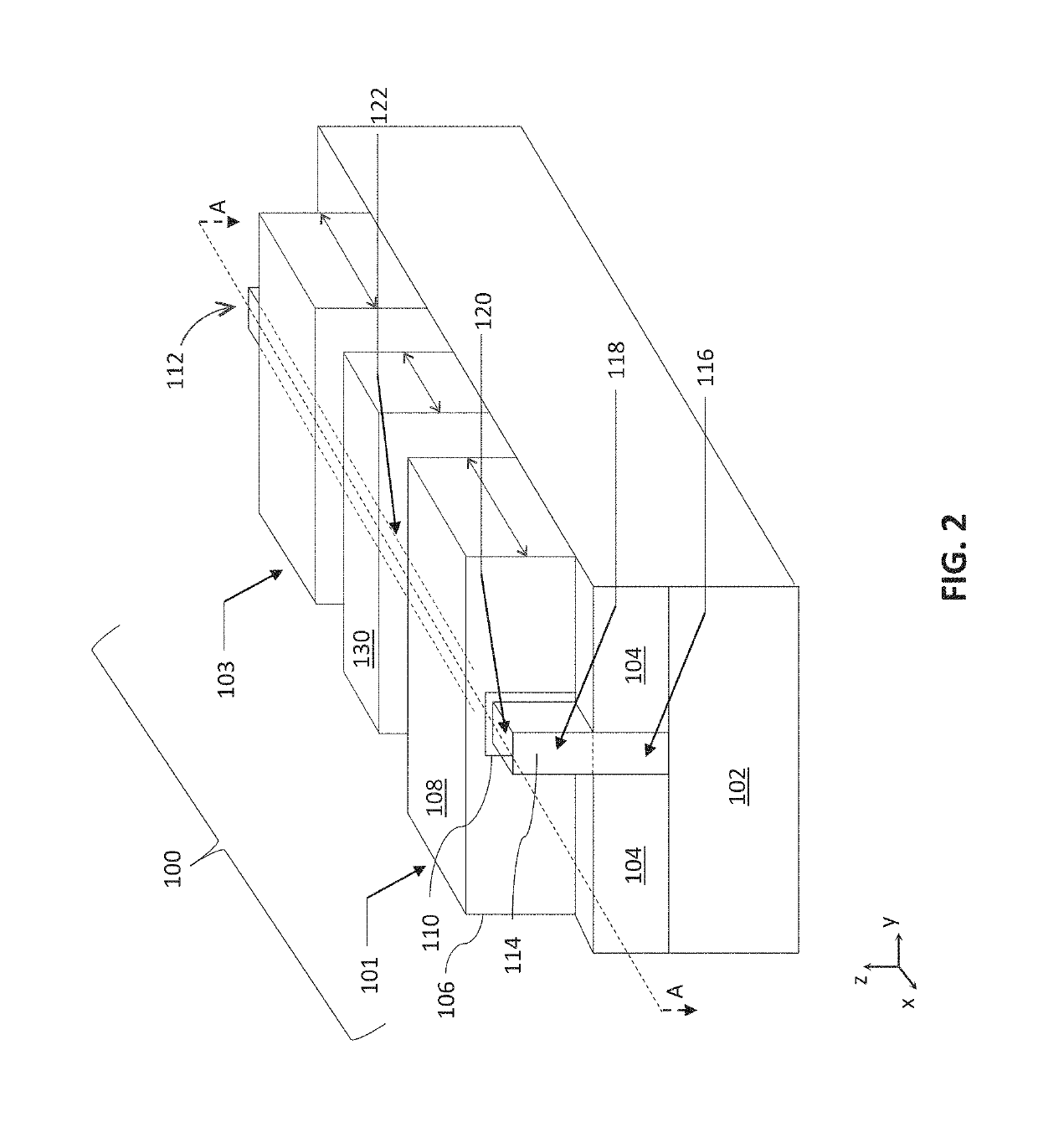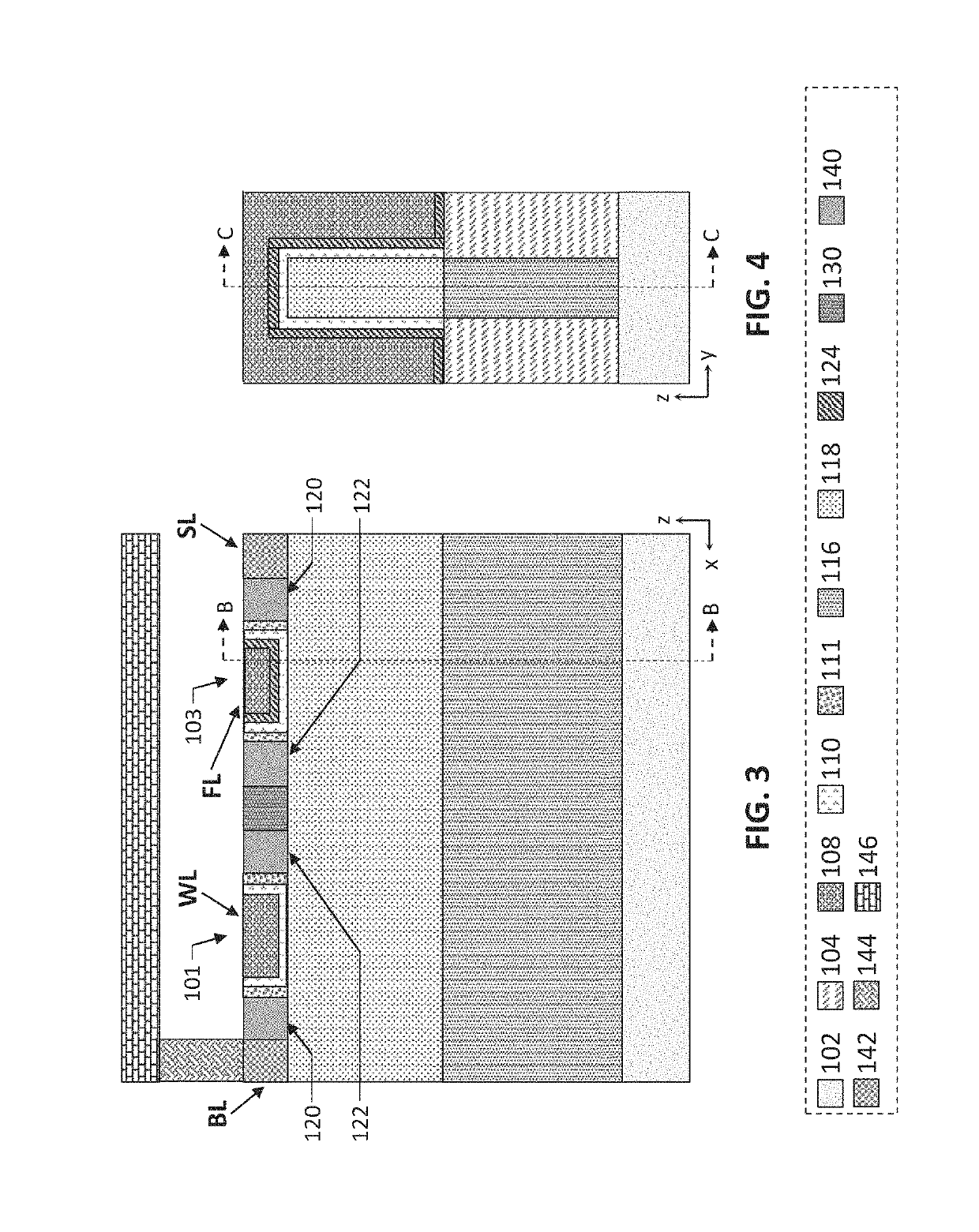One transistor and ferroelectric fet based memory cell
- Summary
- Abstract
- Description
- Claims
- Application Information
AI Technical Summary
Benefits of technology
Problems solved by technology
Method used
Image
Examples
Embodiment Construction
[0030]Described herein are ferroelectric memory cells and corresponding methods and devices. Ferroelectric memory refers to a memory technology employing ferroelectric materials. A ferroelectric material is a material that exhibits, over some range of temperatures, a spontaneous electric polarization, i.e. displacement of positive and negative charges from their original position, that can be reversed or reoriented by application of an electric field. Because the displacement of the charges in ferroelectric materials can be maintained for some time even in the absence of an electric field, such materials may be used to implement memory cells. The term “ferroelectric” is said to be adopted to convey the similarity of ferroelectric memories to conventional ferromagnetic memories, despite the fact that there is no iron (Fe) in ferroelectric materials.
[0031]Ferroelectric memories have the potential for adequate non-volatility, short programming time, low power consumption, high enduranc...
PUM
 Login to View More
Login to View More Abstract
Description
Claims
Application Information
 Login to View More
Login to View More - R&D Engineer
- R&D Manager
- IP Professional
- Industry Leading Data Capabilities
- Powerful AI technology
- Patent DNA Extraction
Browse by: Latest US Patents, China's latest patents, Technical Efficacy Thesaurus, Application Domain, Technology Topic, Popular Technical Reports.
© 2024 PatSnap. All rights reserved.Legal|Privacy policy|Modern Slavery Act Transparency Statement|Sitemap|About US| Contact US: help@patsnap.com










